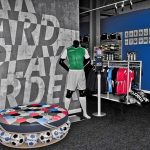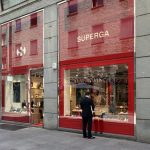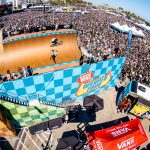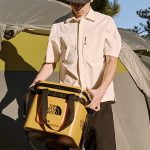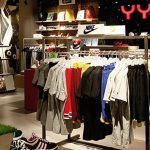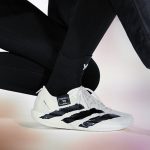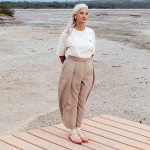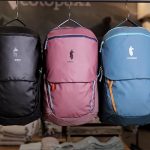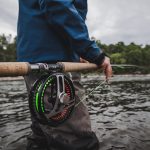While Nike can spend more marketing dollars to build brand awareness and fuel sales growth, consumers are embracing a number of other brands that brought new product to market in categories like toning and lightweight running over the last year.
That observation, along with many others that indicate how consumers feel about brands, is just one finding in the SportsOneSource 2011 Brand Strength Report.
Brands like Reebok, Skechers, Converse and Jordan found increased support from consumers who suggested in a recent survey that they would leave a retail store to buy the brand elsewhere if the store they were shopping in did not carry the brand they wanted.
The SportsOneSource Brand Strength survey was conducted in late November and early December utilizing a third-party Internet panel provider. A total of 4,020 responses were collected providing information on over 60 brands. Respondents were ages 13 and up.
Survey respondents were first asked whether or not they would leave a retail location or refuse to make a purchase if a specific brand they were looking for was out of stock or unavailable. The respondents who said they would leave the retailer were then asked (un-aided) to list the brands that would prompt them to leave the retailer if the brand was not available.
Overall, Nike (31.2 percent) led the field with more than three times as many respondents mentioning the brand than the next highest choice. New Balance (10.0 percent) came in second, just edging out Reebok (9.5 percent), which moved past sister brand Adidas (9.1 percent), which held the number three spot in the 2010 report. Reebok’s non-negotiable percentage was at 6.3 percent of respondents in the 2010 report.
Skechers, a brand bolstered over the last two years by its role in the toning trend, rounded out the top five overall, up one spot from the prior-year report. Skechers saw its “non-negotiable” percentage increase to 6.8 percent of respondents versus 4.3 percent in 2010 and 2.9 percent in the 2009 report. Among females, that percentage jumped to 9.9 percent of respondents, up from 6.8 percent in 2010 and 4.8 percent in the 2009 report. Only 3.5 percent of male respondents mentioned the brand, which significantly impacted Skechers on an overall level, but that was almost double the percentage of mentions by male respondents versus the 2010 report.
Converse fell out of the top five in the most recent survey, but the brand’s 5.4 percent response rate on the non-negotiable question was still an increase versus the 2010 report, when 4.8 percent of Brand Strength survey respondents indicated that they would leave a retail store if the store did not carry the brand.
Brand Jordan, Under Armour, Puma and Vans rounded out the top 10 brands in the 2011 Brand Strength Report, with Vans moving past Asics this year to capture the #10 spot.
The responses to the non-negotiable brand question is one key element of the Brand Strength Index, which was originally formulated in early 2009 by The SportsOneSource Group in an effort to more effectively measure the overall consumer perception of a specific brand. Each brand measured was tested across four main criteria, with those criteria each individually weighted to reflect their importance in the overall indexing formula.
All four criteria were then combined using a proprietary formula to generate a single Brand Strength Index for each qualifying brand.
Other criteria in the Brand Strength Index, in addition to the non-negotiable percentage, were the measurement of brand awareness and the respondents’ willingness to repurchase a brand. Prior to asking the respondents about their intent and motivation behind the re-purchase of a particular brand, they were first asked if they had purchased any of the brands they said they were aware of in earlier questions.
In the Brand Awareness section of the survey, respondents were asked about their recognition of brand names on two levels — unaided and aided.
First, respondents were asked an open-ended question to identify brands of footwear and apparel that come to mind to determine the unaided level of awareness. The respondents were later asked to select from a randomized list of 64 brands to determine their recognition of each brand.
Predictably, Nike led the Brand Awareness charts, followed closely by Adidas and Reebok. New Balance and Puma rounded out the top five brands in total awareness.
Much like awareness, Nike was the top purchased brand of all surveyed brands. More than 66 percent of respondents indicated purchasing the Nike brand in the past year, a 20 point differential between Nike and Adidas. Adidas was the second most purchased brand with nearly 46 percent of respondents indicating they made a purchase in the last year.
As in the awareness responses, Reebok moved into third place on the purchasing side as well this year with more than 44 percent of respondents indicating they had purchased the brand in the last year. New Balance ranked fourth in both awareness and purchasing of the brand.
Skechers moved into the top five spots in purchases by respondents in the 2011 survey, with nearly a third of all respondents indicating a purchase of the Skechers brand versus 28.1 percent of respondents who purchased the brand in the prior year. As in the 2010 report, the brand’s purchasing rate was driven up by a significantly higher percentage of female respondents purchasing the brand than male respondents.
Another key metric observed in the 2011 Brand Strength Report is conversion rate, or the percentage of respondents who said they were aware of the brand and also purchased the brand. It’s not enough to just be recognized; the real strength comes from turning that brand awareness into sales.
While not at the top of the conversion rate chart, Under Amour stands out because of the strength of their conversion rate versus their overall purchase rate. While just over 21% of respondents said they had purchased the Under Armour brand in the last year, 36.5% of those that recognized the brand had done so. This bodes well for the brand if the company can continue to build awareness levels in the coming years.
The top five brands identified in the purchase chart were also the top five in conversion rates.





